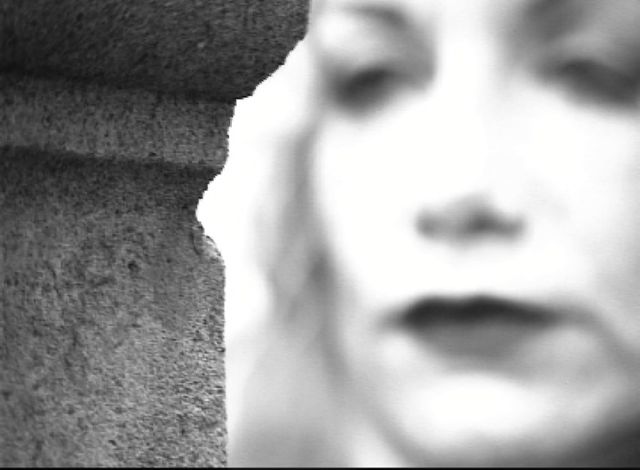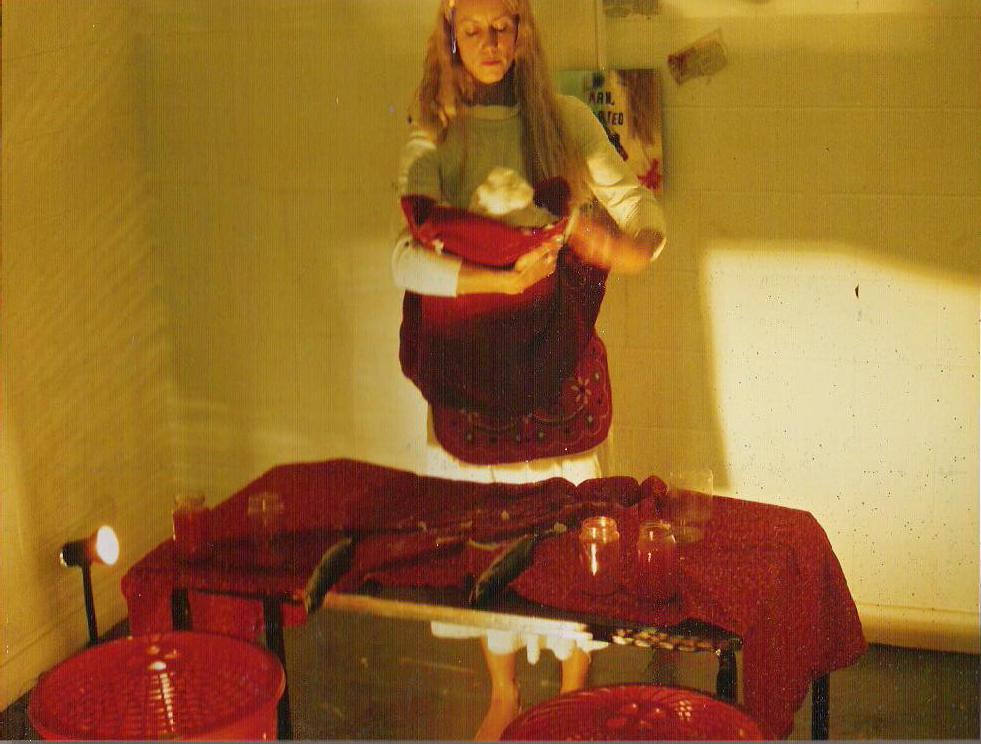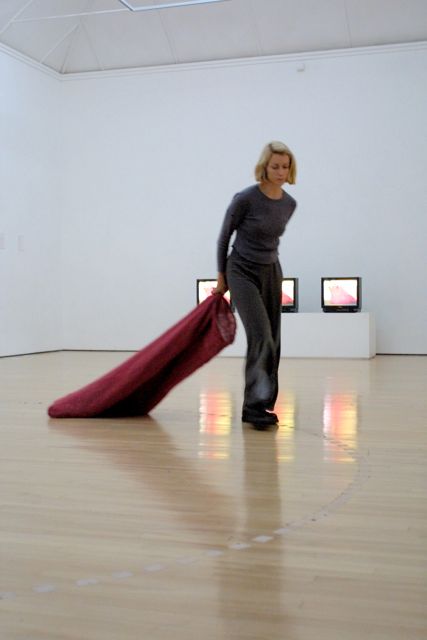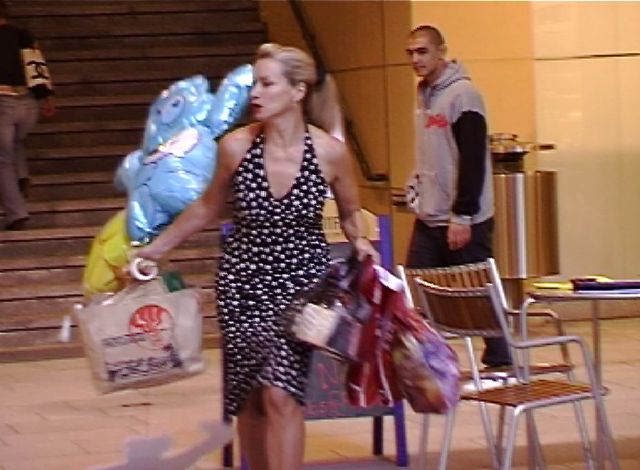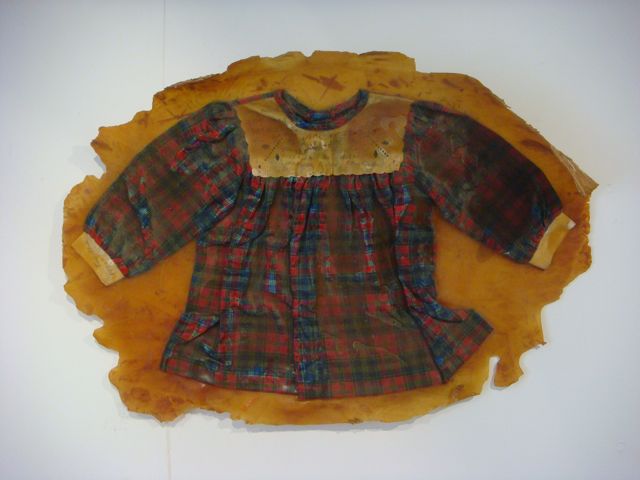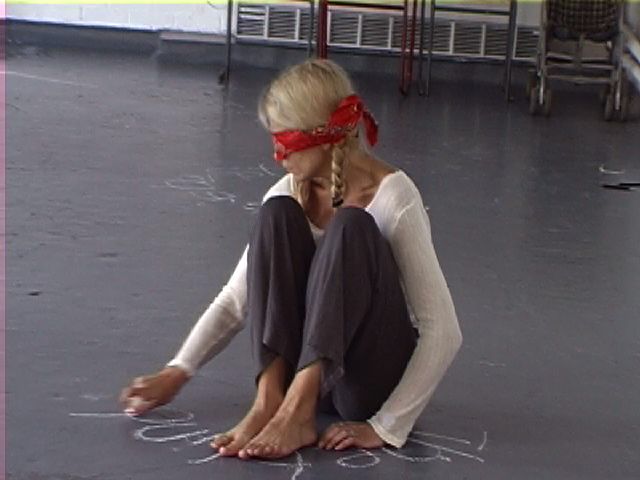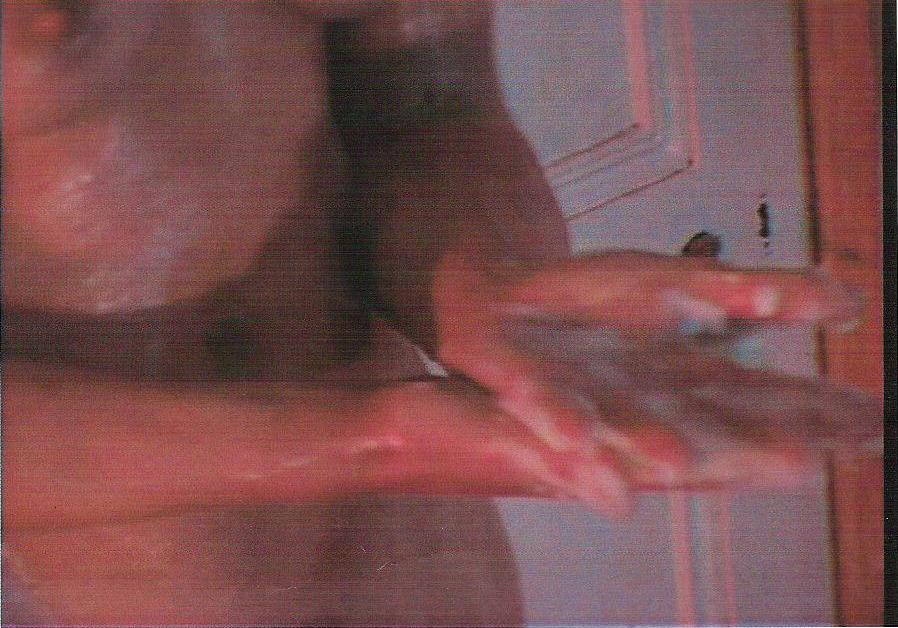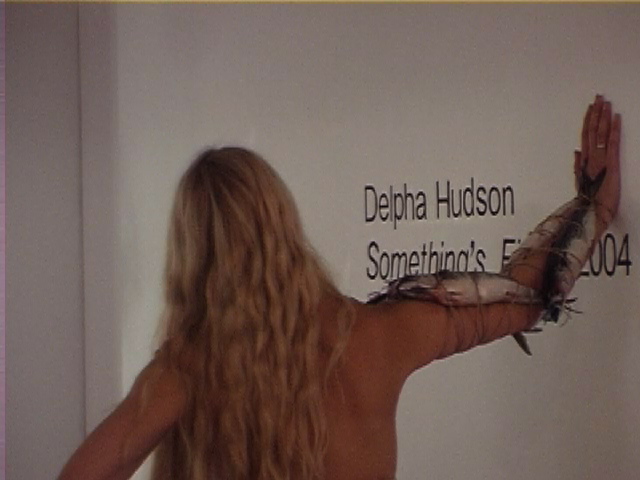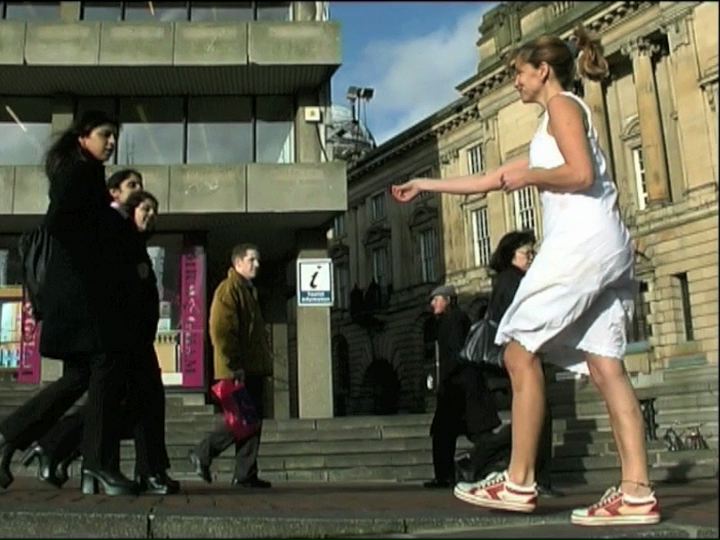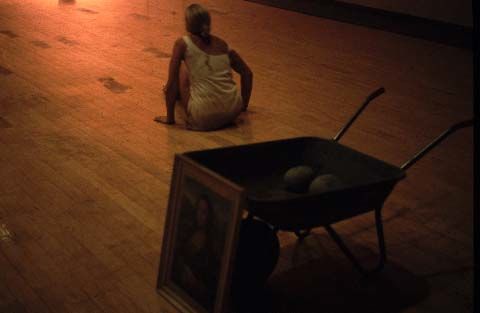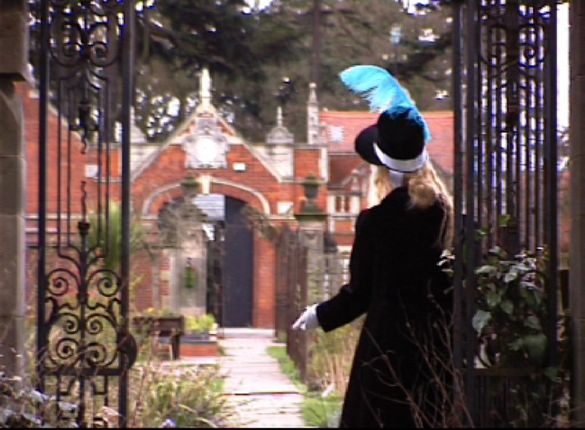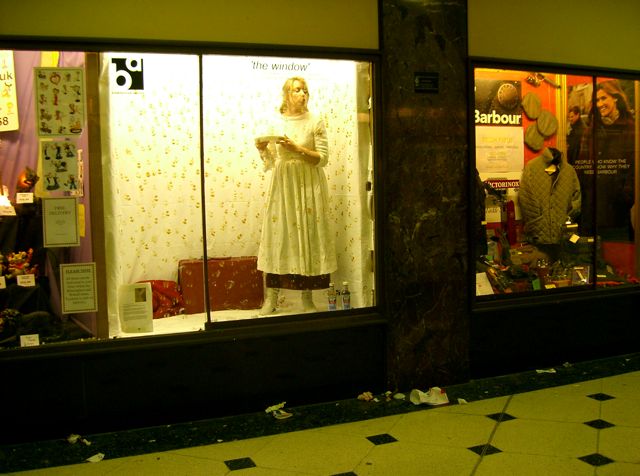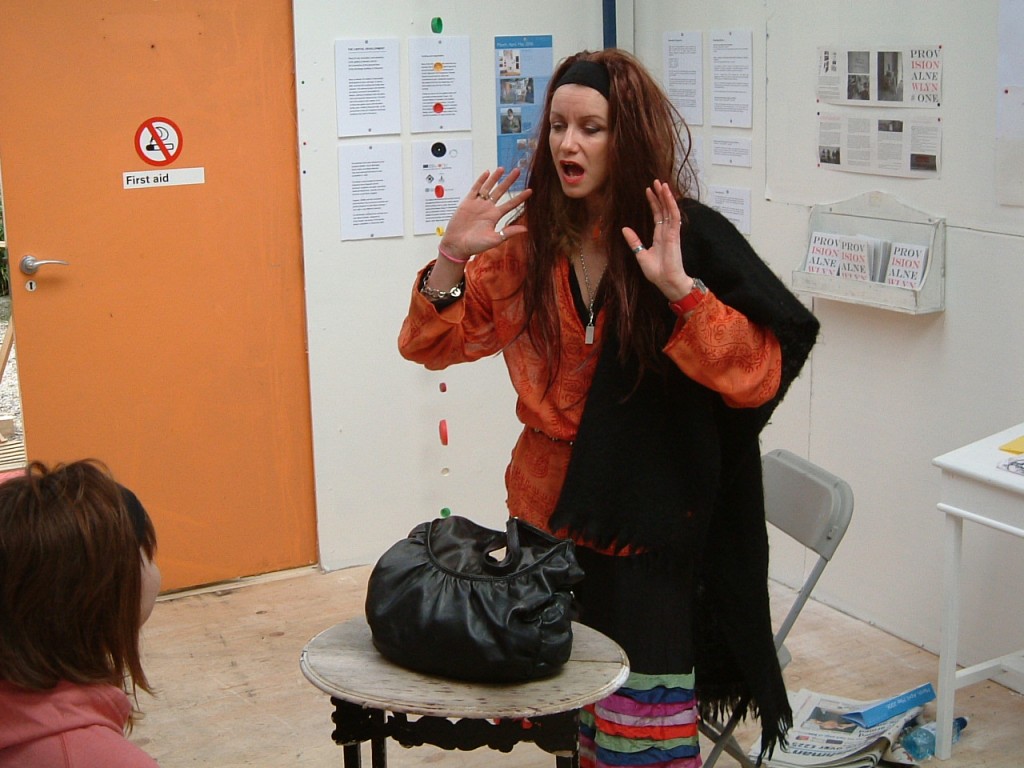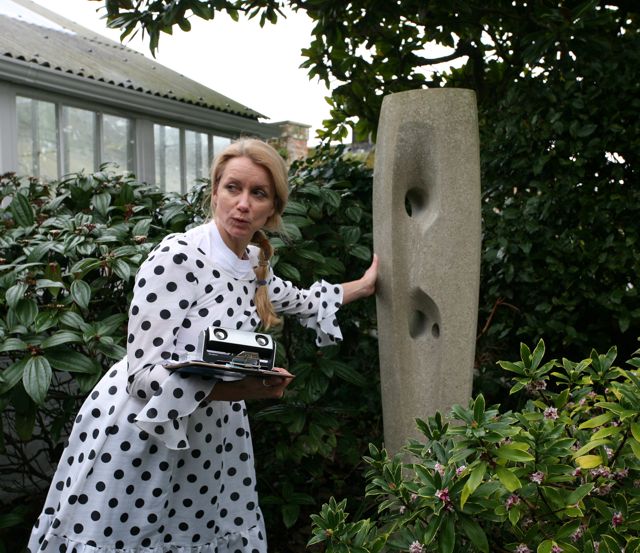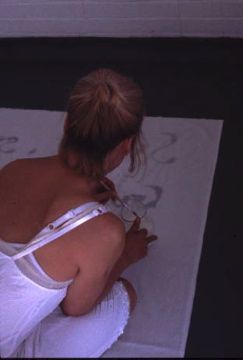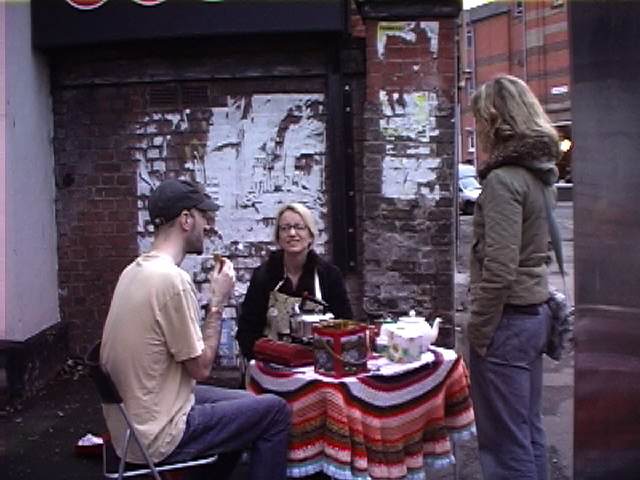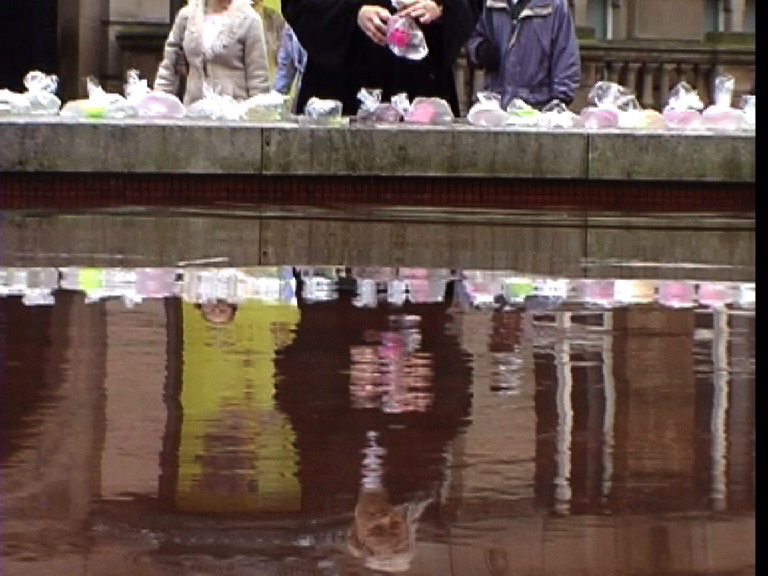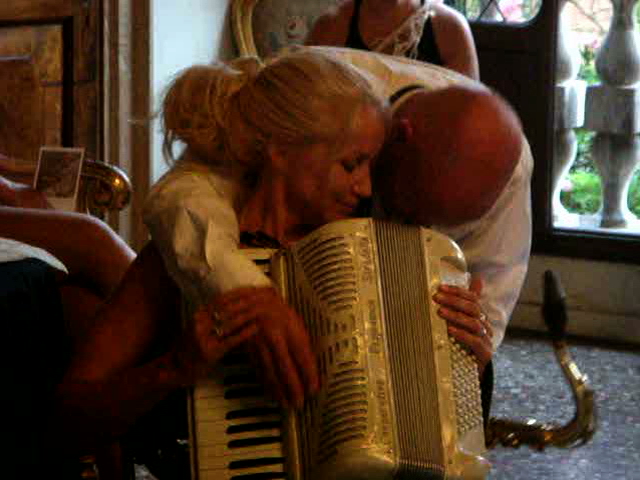This art archive is especially resonant for me as much of the art I make, deals with time and memory.
It’s challenging to record and present art works, as their meaning is never fixed.
It is always fruitful to re-member past themes and convergences and make connections to contemporary practice.
MOTHER WORKS – why making work about motherhood was and is so important
By Delpha Hudson (2017)
‘Re-vision – the act of looking back, of seeing with fresh eyes, of entering an old text from a new critical direction – is for woman far more than a chapter in cultural history, it is an act of survival.’
(Adrienne Rich in Pollock, G., Psychoanalysis and the Image, p.194)
In 1998 I went to Birmingham to study Fine Art. I put painting aside to make performances about gender, subjectivity and motherhood. This online archive is an act of looking back a political statement of insertion and presence; remembering to understand what has gone; re-iteration of ideas that continue to inform current practice – whatever the medium.
Like many women, coming to terms with a culturally designated maternal role and personal history is a continual process. Even now that I am a grandmother, I still feel the passionately distilled anger and despair of motherhood, as well as joy. Mothering involves unpaid work, unfair exchange of labour, unequal expectations, lip service and guilt. We all know it is so, and through support of each other, being good and bad together, we can carve out our own image of mother as a Subject; a multiple, moving, fluid Subject who defies definition, who can love, hate and laugh at motherhood.
The mother subject: motherhood and maternal representation
‘Belying the actual experience of mothering, the cultural fetish of motherhood places pressure on women first to become mothers, then live up to impossible ideals and finally to maintain the mask of motherhood at the risk of their emotional health. The mask of motherhood naturalizes maternity and maternal self-sufficiency by whitewashing the political contours of motherhood.’
(Katherine Stone, Feminist media studies, p 1025)
Motherhood is represented in specific ways in the West. Magnifying the binary of either of good or bad mother, she is represented either in sentimental or monstrous ways. We are surrounded by representations that confirm stereotypes of mothers as all giving, and all caring. Representations of the physical exigency, psychological drudgery and inequality of bearing and bringing up children are often absent, or invisible. There is little that represents this lived reality of the experience of motherhood. She is the one
‘around whom the darkness of maternity is allowed to swirl – the invisible violence of the institution of motherhood, the guilt, the powerless responsibility for human lives, the judgements and condemnation. The fear of her own power, the guilt, the guilt….of much this heart of darkness is an undramatic, undramatized suffering’ ( Adrienne Rich, 1976, p 32).
In exploring the gender imbalance that affects the role of mothering and its representation Adrienne Rich sites motherhood as an institution, an economical and ideological base of society that feeds all other institutions. It is not a biological given but a set of representations suited to a particular social order which circumscribes and controls women’s lives. In addition, Nancy Chodorow in The Reproduction of Mothering argues that ongoing social structures provide the means for the continuation and replication (a play on the word reproduction) of this unpaid role. A personal and political issue for women dealing with everyday hypocrisy and lip service given to mothers, this expectation and social conditioning ensures that mothers stay at home and fulfil their given duties and are accorded a very low status in society. Economically this enables the perpetuation of wealth for men, because women work for free.
Myths of Natural Mother Love and the Mother –Child Dyad take for granted women’s instincts for mothering without allowing for difference in women or counting the psychological and physical costs. Motherhood is a role that relegates women to second place in a male competitive orientated confidence culture with an additional contemporary twist that mothers now are also expected to be successful in the workplace. They are caught up in a paradigm of ideality and expectation. A mother must leave the home to work and be wholly available for her children. Mental health is a big issue for mothers who are never good enough.
Women are brought up to be selfless and are made to feel guilty when they can’t cope. Twenty years ago Lucy Lippard noted the ‘curious void’ of representations of motherhood and procreativity, calling it the ‘next taboo to be tackled’ (Lucy Lippard in Warr, T.& A Jones, 2000, p.254). The mother Subject is not just a void because there are few representations beyond the stereotypical but because the mother as Subject is a thorny problem for philosophical and psychological theory. The basis of all philosophical thought is a single unitary subject – male. Natality falls into an unrepresented zone, with woman’s identity somewhere between less-than-one and becoming more-than-one (Battersby, C., 1998, p19).
The maternal body as two not one, has no basis as a Subject, unless she is re-written. The mother Subject is commandeered by masculine culture declaring her monstrous, abnormal and multiple. Many women theorists and writers have explored ways of creating
‘dissonant voices moving between positions in a nomadic quest for alternative representations of female feminist subjectivity’ (Braidotti, R. 1991, p. 158).
Theoretically it is possible to metaphysically construct a new subject position that makes women typical, instead of men, If an embodied female subject is presented as the norm birthing would be neither monstrous or abnormal, making new models of the self and relationships and new ways of thinking identity possible (Battersby, C., 2006/7).
Representing and writing maternity and natality can change how we think about women whether they mother or not. Sex, gender and patterns of relationality can connect all things at all times, creating fluid forms of resistance to domination and patterns of potentiality and flow. Motherhood and the maternal can be transformative to changing power relations constituted by discourse (Battersby, C., 2006/7, p22 ).
Mother works are based on many premises: to deconstruct representations of mothers in order to address hidden themes and complex structures of visual language used to naturalise traditional patriarchal power relations; to change the reproduction of attitudes that men and women share about motherhood; to share in fluid and complex ways the lived reality of women and motherhood. Simple things could change the world, a world where mothers and carers were supported and felt valued and were supported..
‘The female body must be capable of autonomous representation. This demands a new use of language and new forms of knowledge capable of articulating femininity and women’s specificity in ways quite different from prevailing alternatives’ (discursive positioning: Grosz, E., 1994, p. 152).
Using performance and the body as a space for presence and differentiated representation has the potential to create meaning in representation of the maternal. Negotiating ways of communicating motherhood’s burden and isolation through performance art explores as well as goes someway to presenting this void. Mothers physically and psychologically bear the weight of bearing and rearing children, and mothering becomes in many cases a destructive and overwhelming force. Societal and cultural mores in the West often isolate the mother from others and from herself. She is denied practical support and respect, and denied subjectivity and selfhood.
Art has the potential to present visual positionality (Rosi Braidotti’s term also relates to Elizabeth Grosz’s discursive positioning), creating movement between body, time, site and metaphor, in constant re-constructions that make it possible to discursively represent Mother.
The personal: looking back from now
When I first studied art, I wanted to explain what it felt like to want to enjoy being a mother – but being unable to. As a mother of four I was stressed, depressed, sleep deprived, felt constantly guilty and angry. These hugely conflicting emotions raged deeply within my ravaged body and brain. I don’t think I ever recovered.
Surely ‘the pram in the hall’ (Cyril Connolly) can be beautiful and disturbing? Whatever my diverse interests have been over the years as an artist, I always return to ways of trying to re-present motherhood in ways that challenge normative, stereotypic representations of motherhood. Motherhood is often a masquerade in which we wear a mask and pretend everything is okay. Mothers do not always know how to ask for help and are resigned to coping on their own. They put our mental and emotional health at risk in this pretence.
Representing mothers and motherhood a certain way, contains mothers within a social order and maintains a status quo. Art has the power to not only reveal but to laugh at these discrepancies. It has the potential to change how we see and think, negotiating the paradoxes and ambivalences of mothering. Visual representation shares and engenders empathy and compassion, and becomes a metaphor itself for re-imaging, re-imagining and changing Western cultures of the burden of mothering.
In the late nineties I agonised over many things, and especially how conceptually and theoretically art and performance could reveal and represent lived experience. Women artists made work to break cultural gender assumptions and used personal stories to reveal inequality, yet I found few examples of women artists making the machinations of the institution of motherhood visible.
I explored every strategy I could think of, from evident visual metaphors to quite subtle interventions. Trying in a non-sexual way to use the intimacy of the body, I used video and live art to make dramatic, emotional encounters which I felt made visible the mothers body, pain and trauma. I engaged with what I thought as the mother subject in order to represent her. I thought of myself as an artist like many others, not inclined to call themselves a feminist artist, but nonetheless unabashedly worked with and built on strategies, subject matter, artistic mediums and theoretical approaches that blossomed at the intersection of feminism and art in the 1960s, 70s, and 80s. I now see this as a specifically aesthetic feminist practice that creatively visualized ambivalence and lived realities of motherhood.
Live art and Performance
‘Women’s specifities, their corporeality and subjectivities, are not inherently resistant to representation or depiction. They may be unrepresentable in a culture in which the masculine can represent others only as versions of itself, where the masculine relies on the subordination of the feminine, but this is not logically or biologically fixed. It can be redefined, reconceived, re-inscribed in ways entirely different from those that mark it today’.
(Betterton, R., 1996, p.17)
From the late 90s I wanted to make visual performance that beautifully resonated with the confinement and contradictions of motherhood. I began to develop work that used feminist theory to explore multiple methods of re-presenting motherhood. It was personal and political.
I felt very strongly that working with the body could open up signification and understanding. It could change who we are, who we want to be. I wanted to reveal what it was like to be a mother in society her identity, her position, her body – or lack of all of the above. She, a cardboard cut out smiling benignly like a Madonna empty of reality and dimension. I wanted to make real encounters happen. I hoped to bring about change.
Performing the self was a big challenge because like most women I felt entirely invisible. Not just as a mother, but as a person. I had no value. I would take pictures of myself, and experiment with labelling: NOT HERE. Exploring absence I wondered about possibilities for presence. Reading feminist theory problematized presence and gendered subjectivity yet it seemed possible that any text that uses the body could reveal things about the society around it, how it is controlled and how it is constructed by society. It could also reveal more about the self and the relationship between the subject’s interiority and personal experience.
I wanted to use myself as art material I my own way to ‘tell the truth about my own experience as a body’ (Virginia Woolf in Poole, R, 1990, p266). Idealistically I wanted to make non-commodifiable political art works. I experimented with different strategies that re-produce and re-present the female and maternal body using theories of (re)-finding and (re) situating the female body, questioning not only ‘what is a woman?’ but ‘where is she?’ (Simone de Beauvoir) and not just what representation says about women but what it does to women (Craig Owens). Performing the body invites attention to being; being conscious, being alive. Performance and art as poetic, reflexive and contemplative, and a form of ‘resistance to domination’ (Battersby, C, 1998, p. 206).
Presenting the confines of the body, and its presence, I wanted to utilise the language of the body as a powerful symbolic form and re-inscribe it as
‘an open-ended pliable set of significations capable of being rewritten, reconstituted in quite other terms than those which mark it’
((Florence P, & Reynolds D., 1995, p.197).
The performance of the female body becomes the medium and the metaphor. There can be mockery, laughter, ambivalence and multiplicity:
‘this sentinel standing quietly at the command of my words and acts. The body site of ‘there is’’ ……’others along with whom I haunt [with] representation and actual Being’ (Merleau-Ponty, 1962, p149)
Putting essentialism into context
60s feminism used a range of devices that explored women lives, their lived experience and the control over their bodies. Performance artists in the 60s and 70s used a range of political strategies including presenting the body as erotic and sexualised, whilst by the 1980s, this was very much out of fashion, especially in Britain. Post-structuralist thought on power relationsand new writing about voyeurism and scopophilia (Laura Mulvey), suggested that the gendered body was always sexualized, misunderstood and appropriated. Fears of essentialism, confining women to separate biological and cultural spheres by presenting innate femininity, made personal experience and body performance unpopular. Artists like Mary Kelly were critical of the instability of the performed body and used objects as stand-ins to represent the paradoxical relationship of language and body.
Looking back now, 90s feminist performance freed itself from 80s theoretical influences from Post-Structuralist thought and its accusations of essentialism (Helena Reckitt, 2002). By the 90s other writings influenced feminist performance practice. Spivaks’ ‘strategic essentialism’ suggested using the personal as a force of consolidated political identity, and Judith Butler (Bodies that matter, 1993) showed gender identity was a performance in process. Women’s artworks began to react against the didactic emotional restraint of the 80s. There was the beginning of a slow return to direct articulation of subjective experience, gender and sexual differences for political change.
Somewhere between reading Butler, Mary Kelly et al, performance theory launched me into a world of working with many materials and media in order to enunciate selfhood and multiple selfhood. Performing the body especially enabled me to present ideas about mothers and women about multiplicity and becoming (Luce Irigaray and Gilles Deleuze). I hoped to retain the specificity, fleshy singularities, and sexual differences of being female without reifying feminine experience or female lifestyles into a monolithic unity. I incorporated my bodily lived experience of motherhood and my personal experiences of motherhood to make performances that visually engaged audiences and used conversation and discourse. The multiple female Subjects I presented were an open invitation to change, and fluid movement.
Aesthetic Strategies
Art is propositional, it makes a statement, and is defined by a historically evolving community of belief. ‘An art practice involves moving between a number of different points of view, like the moving camera in a film’ (Lyas, 1997, p172). Aesthetica comes from aeskesis, sense and perception. The imagination synthetically fuses properties and ‘actively put[s] together the elements into a special kind of uniform whole’ (Addison in Herwitz, 2008). Beauty is to be found ‘in forms of representation that allow women to fully become the subjects, women’ (Irigaray in Robinson, 2006, p. 11).
My art practice uses this kind of beauty and aesthetic practices that embrace a collection of disparate themes and fruitful contradictions. The ambivalence of difficult and conflicting territories becomes visually poetic and looking is only a part of a whole, where a number of differentiated sign systems are used in order to understand, and make and become legible (Pollock G., 2001, p. 27). Where aesthetics can be understood as ‘transference between subject positions within the inter-text of the unconscious’, conversation, encounter and engagement become essential to multiple and shifting subject positions. Taking on the forced identity of motherhood and the problems women encounter of the forced masquerade of femininity and mothering is a rich territory to present masquerade and mimicry in which multiple presentations of the self or personae becomes a praxis which deals with the Mother (as) Subject from all possible angles. Using discursive strategies and combinations ‘complex identities can emerge out of shifting decentralised networks of codes and signs’. I can be fractured into many discontinuities and ‘the self birthed in a multiplicity of possibilities’ (Battersby C., 1998).
Making work that was live with emphasis first on looking, using a rich palette of colour, metaphor and symbol, then when possible using media that manipulates all of the other senses in a synaesthetic way creates engaging everyday events. These events, actions performances are symbolic and lived. They have the potential to create synthesis where meaning is shared when we understand and read the body
(Robinson,H.,2006, p. 98).
The use of a theatrical visual palette of colour and metaphor in objects, materials and costume is visually theatrical, yet I always considered performance unrepeatable and of the moment. Attached to time and site – you had to be there. When written performance scores and ideas are reproduced in any way they become versions of that moment yet not the moment. Documentation of performance through video, photographs or writing becomes a kind of re-versioning which uses time, site, relay and return to create depth. Time-based works created in this way create performative depth and could be considered painterly, similar to layering on a canvas or surface to create palimpsest.
Aesthetics are the transgression of the ‘bounded and fixed in the name of semiotic renovation and psychic heterogenerity’ (Kristeva in Pollock, G., 2017, p.142). Combinations and juxtapositions of media, message and form renegotiate difference beyond sign and symbol. Typical language, image and form can be challenged using an array of processes produced in and by the body. Performance is hermeneutic, aninterpretive process which encompasses all forms of communication: written, verbal and non-verbal.Language constructs an imaginary real that supports the fiction of a unified singular male subject. My work intentionally plays with this fabrication of coherent identity in multiple ways. One of these is retro-action, a deferred present or in-between. Mallarmé describes this as antre (other). Fluid interchange and negotiation between self, selves and Other can re-inscribemeaning for the female body/Subject.
Renewing specific metaphors for women can mean using symbolic references already culturally in use and peppering these with more unexpected or oblique clues in which audiences are invited look for legibility and fill in the blanks. Artists who create performance often have a ‘recurrent bestiary’ (Childs, N. & Walwin, 1998) using repeated materials, themes and motifs. This can be thought of as a recognizable palette of siren signifiers, a term I rather like and use because of its relation to dangerously powerful mythic females. Siren signifiers was a term used by Roland Barthes to group signs according to the role they play in the text. It is a language that calls to us and breaks traditional meaning on hidden rocks. There are certainly a range and combination of personal processes and methodologies that I use which are listed here:
Siren Signifiers (personal performance ethics/aesthetics)
1. Performing gender through reference to the body as site of visibility, presence, absence, abjection and liminal, interstial spaces in-between. The body is an engaging visual image-object. The performative creates visual and enunciable works through multiplicity, plurality, gift and generosity.
2. Using metaphors of all kinds; objects and colour that have many symbolic meanings; words and texts that use interplay, entomology and differentiated meanings that refer to women, mothers and their lives; theory and practice of ecriture feminine in which differentiated language deconstructs meaning; differing temporalities, including durational performance which featuring long, physical, acts of endurance as a metaphor for mothers who work and endure.
3. Humour is engaging in very specific ways. It is a way of creating ‘transference between subject positions with the intertext of the unconscious’ (Deepwell, K.,1995). There are different methods of aesthetic techniques (Brechtian A effect, double operations, mimicry, parody, deconstruction, re-submission) describing a range of humour which subverts and re-submits normative expectations of behaviour and representation. Parody and mimicry especially operate as imitative, excessive disturbances. Mimicry is a productive mimesis which has the potential to ‘retraverse exploitation knowingly’ (Robinson, H, 2006, p.9).
These are ‘representation[s] that alienate [and] allow us to recognise its subject but at the same time makes it unfamiliar’ (Elin Diamond in Counsell, C & Wolf, L. 2001, p.79). Forms of parody and humour become resistance. In wilful excesses, women can ridicule contradictions in their lives, play with all positions and show that women are
‘capable of articulating…women’s specificity in ways quite different from prevailing alternatives….(Grosz, E., 1994, p.149) and ‘appropriate ..a place of exploitation but not be reduced to it’ ((Robinson, H, 2006, p.29).
4 . Creating conversation, dialogue and relationships between people, ideas and things. In creating street actions, use of site, context, place and non-art audiences creates a magic of encounter in which meaning is made, and comes to life through dialogue and exchange.
Applying Bahktin’s dialogism to gendered performance, dialogue can be, ‘not just a means for revealing, for bringing to the surface the ready-made character of a person but instead an unfinalizable process by which a person becomes for the first time that which [s]he is’ (Pollock G., 2013). Creating situations in which audiences can inter-face, inter-act and en-counter creates movement and malleability. Conversations are ‘discursive public spheres,’ in which people articulate established positions and have the potential to not only change them, but actually come into being though dialogical interactions with others (Pollock G., 2013, p.240).
5. Masquerade is a disguise or likeness to another, used in performance as a vehicle for humour parody and playfulness, it creates possibilities for the multiplicity of self andplural subjectivities. Visually engaging masquerade enables role-playing and personae, which play with identity, expectations and the power structures that confine and define women and mothers. Women and especially mothers perform and play their allotted roles. Excessive re-play enables women to scrutinize the society expectations they become party to and in laughing at these, creating further role-plays that do not fit a cultural script. I write scores but do not write and perform scripted performance. When masquerading as someone else (Madame Sac-a Mano, Jane Austen or Barbara Hepworth) I have used scripts loosely often just conversing or ad-libbing with audiences, and always fluidly slipping out of character. This use of slippage infers women’s potential to be many.
8. Repetition, time and replay. Using visually poetic historical return and simultaneity, time-based works use a combination of liveness and video performance to create dialogue through and of time. Documentation of performance can be re-versioned. Moving between time frames creates movement in diachronic discourse. Being concerned with the ways in which women have been contained historically reveals corrupt ideologies that can be re-written and re-visioned. The aesthetics of return and re-versioning are a way of dealing with and referring to trauma.
Masquerade
Judith Butler describes gender not as a given but an appropriation. Masquerading as women, gender itself is ‘an inscription of law onto the body as surface-effect’ (Butler, J., 1993). How much more is motherhood a masquerade? The assumption for women is that performing motherly duties and being a good mother is as natural as the physical act of giving birth. Yet, women who mother, have to not only learn how to mother, how to be mother but to be seen to appropriate all the necessary attributes of motherhood. This masquerade of motherhood is often part of a societal pressure to conform. She is represented as only Madonna or monster. This binary either/or forces women to appropriate and role-play in order to avoid being a bad mother (monster). Using masquerade and role play to poke fun at these expectations is a way of escaping gendered containment and confinement. Presenting roles that are neither/nor – not one or other – squeezes around and beyond the outer and inner limits of stereotypical binary positions to create multiple alternatives.
Masquerade creates performative crossings between codes creating multiple displacements, thus dramatically transferring realities. The identity of a self and subject comes from the way it is positioned in language, and context. Masquerade can create dissonance and junctures between self and not-self creating further instabilities for the male unitary I/eye. The
‘conception of the beautiful for women, is rooted in the body and bodily experience‘ (from irigaray in Robinson H., 2006, p.10).
The beauty and ambivalence of lived experience is especially difficult for mothers so reaching beyond stereotypical representations by mimicking them and re-submitting them to scrutiny can make women visible and legible in surprising ways. In performance I appropriated and played roles – ‘becoming subject. Parodying stereotypes and creating language games produces slippage between the sayable, and unsayable. I have masqueraded as historical characters, as tour guides, mis-guides or failed palm readers in order to re-represent and include women in public realms of signification. Masquerading as different characters is an engaging way to create humorous slippage between myself, others and our potential to be multiple.
Language and ecriture feminine
‘There exists a ‘discourse’ which is not a mere depository of thin linguistic layers, an archive of structure, or the testimony of a withdrawn body, and is instead the essential element of a practice involving the sum of unconscious, subject and social relations in gestures, confrontation and appropriate destructions and constructions.’
(Kristeva quoted in Betterton, 1996, p.17)
Jaques Lacan’s writing implicates the body as constructed in and by language concluding that in language ‘la femme n’existe pas’ (woman does not exist). Reworking Lacan’s theories Helene Cixous and Luce Irigaray create new feminine spaces for language that is rooted in female sexuality and her body. Cixous exhorts women to ‘write the body’/‘anything to do with the body should be explored’, [womens’] ‘inscription of difference has subversive possibilities’ (Cixous H., 1991).
In combining performing the body and writing processes, I think of my own version of ecriture feminine as a process of making ‘enuciable the non-enuciable’ (Deleuze in Zepke, S.,2010, p.28). Stream of consciousness writing tasks were performed in various substances such as milk, honey and bitumen. The substances were treacly, smelly, viscous, and abject. Time and material create layers of interplay or dialogue between the body, gesture and visual sign systems. Often writing on large-scale surfaces or cloth took many hours to fill. This durational performance of language and selfhood performs a ‘body that speaks in hieroglyph’, one that, ‘finds no representation in the economy of dominant discourse’ (De Zegher C., 1996, p259). I found new ways of proposing a female body and Subject through automatic writing, hoping to create new metaphors for mothers and movement; new ways of speaking mothers’ lived experience.
These multisensory experiments used language, symbol and metaphor in literal and oblique ways, producing a range of possible meanings that invited audiences to follow multiple clues, codes and create further interactions. They constructed new ways of seeing, thinking and understanding a female Subject through performance and installation.
Taking to the streets – sited public and political encounters
Making actions or performance in the street creates direct interfaces with very different audiences from art gallery goers. Using public spaces for private interactions and encounter produces differentiated meaning for gendered performance. Often these sited works became focussed on power structures; about who owns or controls public spaces and how women are required to behave in these places. It is subtle political protest as I may only have been initiating a conversation with passers-by. Street performance has the potential to create movement, change and the dialogic through engagement, humour and shared endeavour.
Women are often isolated in the home and city spaces are rarely designed by women, or with women or mothers in mind. Their needs, in this respect as in many others are not considered, despite lip service given. Nowadays when women or mothers are taken into consideration, it is often only as a consumer group. Negotiating and using streets and shopping centres for unusual acts of engagement with people is a propositional act. It opens up dialogue, engagement and interaction. Public space is used as a metaphor for the power structures that control women’s lives and over-coming them by being unexpectedly present.
Sometimes there is an element of visual spectacle yet it is intentionally subverted into small, incidental acts or public transactions. Working in city spaces can be weird and uncomfortable but people are often friendly, open and interested in what you are doing if they have time. They often ask questions and engage in comic or meaningful conversations that you would not have in a gallery or art space.
Time and trauma
Trauma is often referenced in art as cathartic process. Traumas are often revisited or relived through artistic processes. They are, more often than not, somehow heroic. In dealing with the ordinary, everyday and domestic, trauma is not often considered. And if it was, it would certainly not be considered heroic. Difficult domestic situations are often considered as just something you get through. It is something (in the present or past) that cannot be articulated. As it is considered small and inconsequential it is often not spoken of, shared or presented. Mothers deal with huge amounts of stress and trauma and it is not heroic (or anti-heroic) as much as stoic. This stoicism is often harmful for women who cannot represent themselves, and cannot verbalise or represent the source of their anxiety or anxieties.
Trauma is a ‘symbolic discourse that uses at source inarticulate and ir-representable sites of unprocessed anxiety’ (Pollock, G., 2013, p. 12). Intimating experience through time and repetition can create movement between idealisation (the heroic) and the lived reality (which to me often seems stoic). Traumatic events can be intimated, allusively encountered, never mastered, and not fully seen (“ “p. 7). Increasingly I see and understand my maternal practice, as ‘encoding what was once lived’, in a kind of nachlaeben or after-life- even though it is past and I have already been through it.
In creating poetic evocations of quotidian life, which touch and share an elusive something that can create empathetic ‘participatory responsiveness, …and reciprocal co-affectivity’, ( “ “p.11 ) we create a ‘pathos formula’ (Amy Warburg) which enables us to have empathy with others and for ourselves in surviving trauma. When we create work that expresses something about the trauma we have experienced, we are witnessing ourselves to others. We are also wit(h)-nesses (Bracha- Ettinger from “ “ , p.15) having the potential to join with and feel with others. In with-nessing others’ trauma and experiences, we can learn to bear and live with our own experiences.
Bracha-Ettinger also uses the term matrixical, as a way of relating the maternal possibilities to a co-becoming with others, not as an oppositional binary but as trans-objective space. This space is one in which we can share our experiences for transformation and change. Rupturing existing modes of representation and dealing with every day, even small domestic traumas through metramorphic (from metra =mother and morphology= change) formations that use personal legacies of sexual difference and loss of self to transform the burdens we share (all quotes from (Pollock, G., 2013).
Feminist theory helps us understand how we might share our stories, our lived reality and experience to maintain mental health and help to transform our own and other’s lives.
Conclusion
In the process of returning to this mother subject, I have in many senses re-vived and re-vised (re-lived, re-seen) quintessential parts of my practice that slip multiply between differing frames of media and process. My arts practice has always focussed on the productive role of theory – and how praxis – the engagement in ideas and the process of making new ones – might be achieved. Multiple practices are often not welcomed or understood within the bounds of typical singular disciplinary stasis – or markets. My arts practice is like a collage that informs and creates new dialogue and conjunctions in diverse and multiple ways. It remains fluid but focussed as returning to the mother subject/mother-as-subject. I have never strayed very far from endeavouring to make the void of motherhood visible The politics of motherhood has remained an over-arching theme in my practice and I still want to defeat social clichés about caring and motherhood through evocative encounters. Performance strategies are key to exploring the lived experience of motherhood and its visible re-representations.
It is a pleasure and a task to belatedly examine strategies for re-representing motherhood. In sharing what could be called psycho-aesthetic processes, I hope to understand, and to share understanding. The role of visual art as a symbolic space is one in which meaning is constantly renegotiated. Visual performance theory and practice has enabled me to renegotiate my-Self as material, fluidly moving between making and doing, thinking and experimenting, re-combining and scattering ideas. The body and materials as metaphors for the body, are limitless and unfinalizable. They are always becoming (in process).
I still aim to make art that creates ‘matrixical alliances’ (Pollock, G., 2017, p.19) and engage others’ empathy so that new understanding of mothering and the lived experience of care for women. I would like to transform the burden of parenting. What jouissance and transformation might be possible if we were all responsible for all of our children?
‘We can only know what we can truly imagine. Finally what we see comes from ourselves.’ Marge Piercy
View film, sculpture, installation & curation projects.
Look at more examples of performance work
